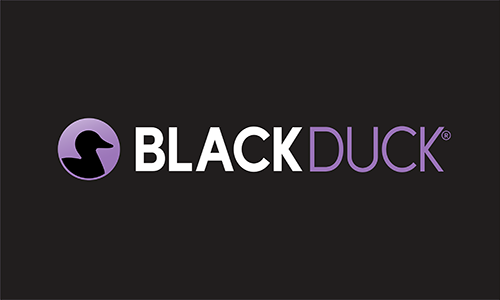Subscribe
Discover how the latest Polaris release update empowers organizations with enhanced features for a secure, innovative future.
In the ever-evolving landscape of application security, staying ahead means adopting tools that not only shield your business but also accelerate innovation. Today, I am very happy to introduce the latest set of enhancements delivered to Polaris this past month—a platform update packed with new feature capabilities that redefine how organizations manage visibility, automation, compliance, and control across the entire application security lifecycle.
This update isn’t just incremental; it’s transformative. Polaris continues to push the envelope and deliver feature enhancements designed to give organizations greater precision in security reporting, enhanced developer experiences, and a streamlined workflow that drives greater operational efficiency.
Lightning-fast scanning with latest rapid scan static support
Time is of the essence for developers, especially during rapid iteration cycles. Polaris now supports rapid static scan—delivering analysis in under two minutes for feature and development branch pull requests. Developers can:
- Leverage the dual-mode scanning (rapid and full scan analysis), balancing speed for feature branches with thoroughness on merge
- Gain real-time feedback without leaving their development context
- Reduce CI pipeline execution times, lower cloud costs and increase adoption rates
The latest update also includes new dataflow checkers for Python, enabling earlier and more accurate detection of dataflow-related defects. Polaris immediately surfaces these results, providing developers with actionable insights when they need them most. Watch our webinar for a demonstration on how Polaris empowers developers and meets them where they are.
Triage approval workflow: Oversight meets agility
Managing application security at scale requires both speed, accuracy and accountability. The new triage approval workflow gives organizations an extra layer of governance to their vulnerability management process, ensuring that triage actions are reviewed and validated before changes take effect.
The triage approval workflow enables you to
- Set guidelines for approvals of triage decisions—at both the organization and project level
- Designate approvers by role and set clear approval criteria
- Approve or reject requests individually or in bulk, streamlining high-volume operations
This workflow not only increases oversight but also ensures every triage decision is consistent, validated, and fully auditable—empowering teams to move quickly with confidence in the process. Watch the webinar to see how Polaris works seamlessly within your DevOps CI/CD workflow.

Report and dashboard scope filter improvements: Granular insights for every team
Reporting in large, complex environments can be a challenge. Not all projects are created equal, and neither are their reporting needs. With a new way to select the scope of applications, projects, and branches, Polaris enables teams to refine the scope of their report generation to what matters most.
Teams can now customize the scope of their reports and dashboards via new branch filters and application label, project label, and branch label filters. On the “Create Report” page, users can select the report scope that works best for them and add additional filters to ensure the scope meets their criteria. These configurations can be saved for future use, ensuring consistent and tailored reporting across projects.


On the “Dashboards” page, dashboards will have relevant filters for branch type, branch, application label, project label, and branch label.

These enhancements empower teams to generate more targeted, meaningful reports and dashboards by tailoring the scope and filters to their unique needs. With the expanded scope customizations and filters support, Polaris simplifies reporting in complex environments giving users a way to surface insights quickly and accurately. See Create a report for more information.
Policy filter in the component and issues tabs: Rapid risk identification
When managing complex projects, identifying policy violations quickly is key. The new policy violations filter in the “Components and Issues” tab makes it easier than ever to
- Quickly flag components and issues that violate set policies
- Access at-a-glance icons and hover-over details for instant context
- View project-level policy violation summaries to prioritize remediation efforts
This empowers teams to respond rapidly, address risks proactively, and maintain continuous compliance.



Polaris fAST Engines Update
Enhanced fAST Static with Coverity 2025.6.2 support
Polaris now supports Coverity 2025.6.2, which addresses a critical regression in C/C++ captures in version 2025.6.0. Check out the full release documentation to ensure your toolchain remains supported. For quick reference, see the Polaris August release notes for a list of updated language frameworks and versions that have been end of life (EOL) or deprecated.
fAST Dynamic AI-assisted authentication: Scale DAST quickly and reliably
The hardest part of dynamic application security testing (DAST) at scale is no longer the scanner—it’s the login. We have removed the primary blocker to widespread DAST coverage: brittle authentication with the rollout of AI-Assisted Authentication in Polaris fAST Dynamic in August. We continue to enhance the AI capability since then.
The biggest challenge of DAST—reliably managing authentication across hundreds of apps—is now solved! Simply provide a login URL and credentials. The built-in AI model securely handles complex sign-in flows (including multi-factor authentication) and passes control to the scanner. This enables security teams to scale authenticated testing quickly, consistently, eliminating brittle scripts and constant credential management.
Read the blog post on our AI-assisted authentication and other DAST enhancements to learn how Polaris delivers authenticated DAST coverage that onboards in minutes, scales across hundreds of apps, and requires minimal handholding.
Conclusion: Polaris empowers secure innovation
Summarize the main points of your blog article and provide any closing thoughts or insights. This is your chance to reinforce your message and leave a lasting impression on your readers.
Continue Reading
Three steps to ensuring the reliability and security of your C++ projects
Jun 03, 2025 | 3 min read
How to secure AI-generated code with DevSecOps best practices
May 08, 2025 | 3 min read
Security automation and integration can smooth AppSec friction
Jan 23, 2025 | 6 min read
Overcome AST noise to find and fix software vulnerabilities
Jan 06, 2025 | 6 min read
Artificial intelligence widens the gap between security and development
Dec 01, 2024 | 7 min read








